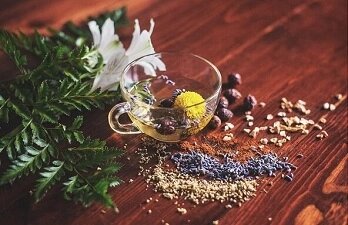Herbal Museum
Arogyadham Herbal Museum
The Arogyadham Ayurveda Treatment Centre in India has come up with a unique Ayurvedic museum that has a rich collection of around 900 specimens of medicinal plants and rare herbs. It is the only museum with such a collection in the country that showcases the various herbs and remedies used in Ayurvedic medicine.

Sayings Of Dr Rakesh Aggrwal On Arogyadham Herbal Museum
“No other Ayurvedic institute in the country presently has such a rich collection of the specimen of medicinal plants and herbs in the country,” said Dr. Rakesh Agarwal. “Similarly, parts of medicinal plants with therapeutic value, including bulb of onion, the rhizome of turmeric, and leaves of Tulsi, are also preserved at the museum,” he added.
Saying that the museum is open to visitors, including foreign nationals, Dr. Rakesh Agarwal emphasized that it would also act as a guiding tool for research scholars who can refer to the museum for seeking information regarding the medicinal and therapeutic properties of herbs and medicinal plants. “The museum remains open for nine hours (8 am to 5 pm) and the viewing is free of cost,” he said.
Features Of Arogyadham Herbal Museum
The Arogyadham Ayurveda Herbal Museum features the various herbs and remedies used in Ayurvedic medicine and provides visitors with a glimpse into this ancient practice.
Here are some of the features of the Arogyadham Herbal Museum in India:
- The museum is housed in a traditional Indian building with a beautiful courtyard and arches, providing visitors with an authentic cultural experience. Ex-Governor of Uttar Pradesh, Suraj Bhan, inaugurated the museum. Additionally, three ayurvedic research labs have also been established on the first floor of the building.
- The museum is surrounded by beautiful gardens and greenery, creating a peaceful and serene atmosphere for visitors.
- The museum is located in a prime location in India and is easily accessible by public transportation and private vehicles.
- The museum features a 900-wide variety of herbs and plants used in Ayurvedic medicine, such as neem, turmeric, ginger, and ashwagandha. Each herb is labeled with its name, botanical name, and traditional use. Visitors can learn about the benefits and uses of each herb, as well as how to use them to promote healing and wellness.
- Arogyadham Herbal Museum is free to visit for all visitors. This means that anyone can explore the museum's diverse collection of herbs, Ayurvedic remedies, tools, and educational exhibits without having to pay any entry fee.
- The museum offers a collection of Ayurvedic remedies, including oils, powders, and teas, which are carefully crafted using natural ingredients and traditional Ayurvedic techniques.
Overall, the Arogyadham Herbal Museum is a unique and fascinating destination that offers visitors a rare opportunity to learn about the natural remedies and traditional practices used in Ayurvedic medicine. With its diverse collection of herbs, remedies, tools, and educational exhibits, Arogyadham Herbal Museum provides a comprehensive understanding of Ayurveda and its continuing relevance in the modern world.